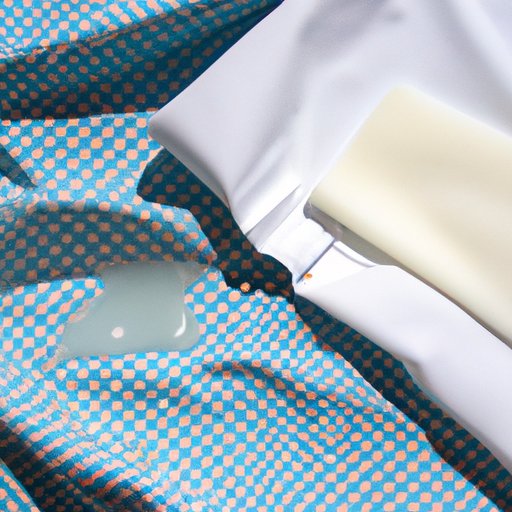Introduction
Dry cleaning is a method of cleaning clothes and other fabrics without using water. It is a process that uses non-aqueous solvents such as perchloroethylene (also known as “perc”) or hydrocarbons to remove dirt, oils, and stains from fabrics. The process is often used for delicate fabrics that cannot be washed with water or require special care, such as wool, silk, and cashmere.
The Benefits of Dry Cleaning
Dry cleaning has many advantages over traditional laundering. According to the Textile Exchange, it can help extend the life of fabrics by removing dirt and oils that can break down fibers over time. Additionally, dry cleaning can reduce the risk of shrinking and fading, as well as damage to delicate fabrics. It can also help preserve the shape of items like suits and dresses, which may become misshapen when washed in water.

The Different Types of Dry Cleaning
There are several different types of dry cleaning methods. Wet cleaning is a water-based process that uses biodegradable detergents and is considered an eco-friendly alternative to traditional dry cleaning. Solvent cleaning uses solvents such as perc to remove dirt and stains. Carbon dioxide (CO2) cleaning is a newer process that uses pressurized liquid CO2 instead of harsh chemicals. Finally, liquid silicone cleaning uses a liquid silicone solvent to clean fabrics.

Tips for Choosing a Quality Dry Cleaner
When selecting a dry cleaner, it’s important to do your research. Read reviews online and ask friends and family for recommendations. Once you’ve narrowed down your choices, ask the cleaners about their methods and make sure they are certified and accredited. You should also inquire about any special services they offer, such as stain removal, pressing, and alterations.
The Environmental Impact of Dry Cleaning
The chemicals used in dry cleaning can have a negative environmental impact. Perc, for example, is a known carcinogen and has been linked to air and water pollution. It is also a volatile organic compound (VOC), meaning it can evaporate into the air and contribute to smog. Additionally, disposing of chemicals and waste from dry cleaning can be problematic, as most dry cleaners do not have wastewater treatment systems.

How to Save Money on Dry Cleaning
There are several ways to save money on dry cleaning. First, focus on quality over quantity. Invest in high-quality fabrics that don’t need to be dry cleaned as often. Second, buy items that are easy to clean at home, such as cotton shirts, khakis, and jeans. Finally, take advantage of specials and discounts offered by dry cleaners. Many offer discounts for large orders or when bringing in multiple items.
Common Questions About Dry Cleaning
Many people have questions about dry cleaning. Here are some of the most common:
- What type of fabric should be dry cleaned? Most delicate fabrics, such as wool, silk, and cashmere, should be dry cleaned. Other fabrics, such as cotton and polyester, can usually be safely laundered at home.
- Is dry cleaning better than laundering? In general, dry cleaning is better for delicate fabrics, as it is gentler on the fabric and helps preserve the shape of items like suits and dresses. However, laundering can be more cost effective.
- Are there any health risks associated with dry cleaning? Exposure to the chemicals used in dry cleaning can potentially be hazardous to your health, so it’s important to choose a quality dry cleaner and follow all safety instructions.
Conclusion
Dry cleaning is a safe and effective way to clean delicate fabrics and extend the life of clothing. It can help prevent shrinking, fading, and damage to fabrics, as well as preserve the shape of suits and dresses. When selecting a dry cleaner, be sure to research and read reviews, ask about their cleaning methods, and check for certification and accreditation. Additionally, be aware of the environmental impact of dry cleaning, as the chemicals used can be hazardous to your health. Finally, there are ways to save money on dry cleaning, such as focusing on quality over quantity, buying items that can be easily cleaned at home, and taking advantage of specials and discounts.
(Note: Is this article not meeting your expectations? Do you have knowledge or insights to share? Unlock new opportunities and expand your reach by joining our authors team. Click Registration to join us and share your expertise with our readers.)
